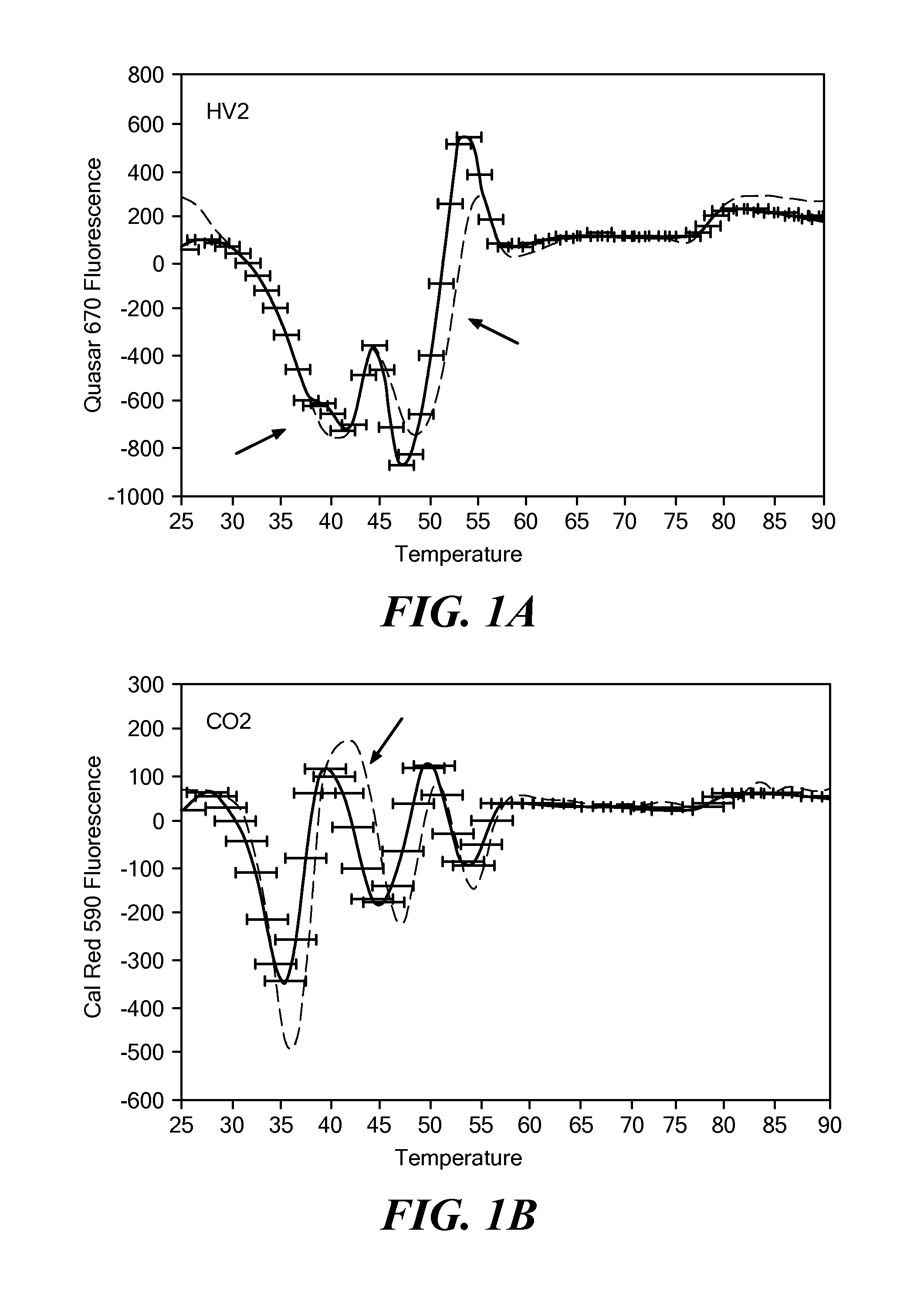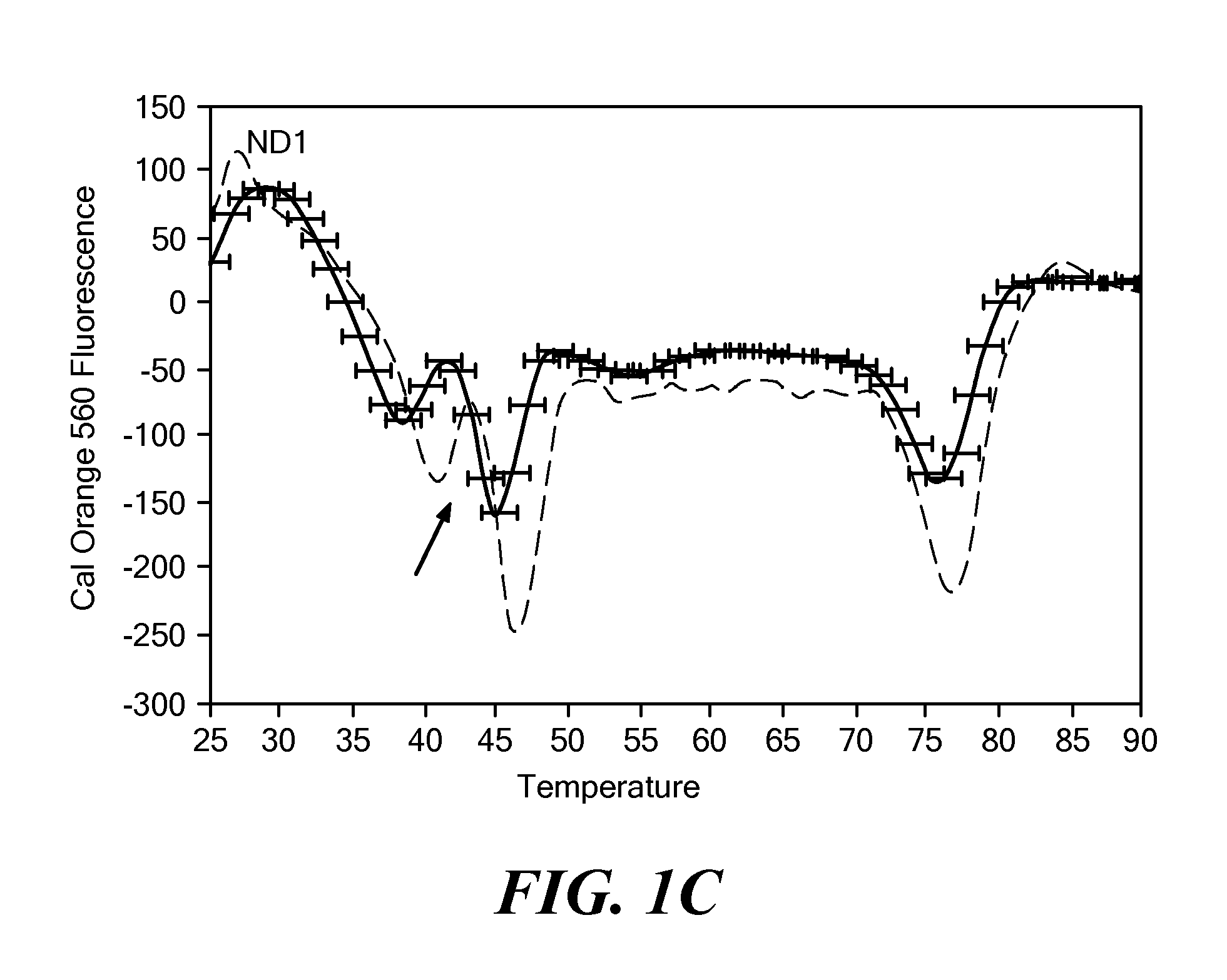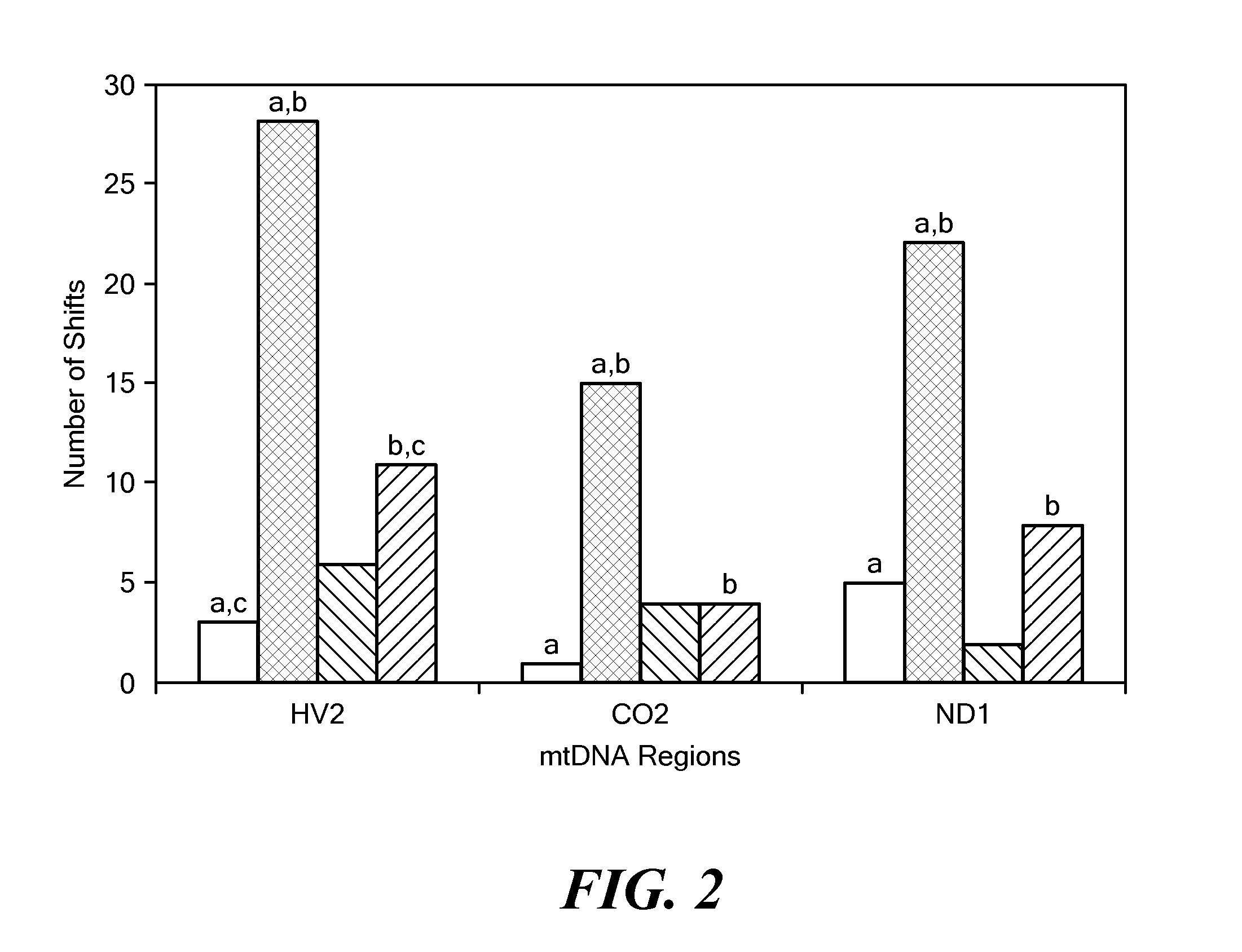Treatment of DNA damage and mitochondrial dysfunction using palm fruit juice
a technology of palm fruit juice and dna damage, which is applied in the directions of library member identification, plant/algae/fungi/lichens ingredients, peptide/protein ingredients, etc., can solve the problems of increasing the risk of mitochondrial disorder and/or mtdna damage, and causing mtdna damag
- Summary
- Abstract
- Description
- Claims
- Application Information
AI Technical Summary
Benefits of technology
Problems solved by technology
Method used
Image
Examples
example 1
PFJ Reduces the Number of Mitochondrial Mutations Caused by AZT
[0092]A thirty day experiment was conducted using the HepG2 liver carcinoma cell line (ATCC, Manassas, Va.). The experiment included analysis of non-treated, AZT-treated, PFJ-treated, and AZT and PFJ-treated cultures. Each condition was tested in triplicate.
[0093]The cells were grown in Eagle's Minimum Essential Medium (ATCC Manassas, Va.). The media were supplemented with 10% fetal bovine serum (BioWest) and antibiotics containing 50 units / mL penicillin G, 50 units / mL streptomycin, and 0.25 μg amphotericin B (HyClone Antibiotic / Antimycotic Solution 100×). The treated replicates were given 7 μM AZT (Sigma, St. Louis, Mo.), 25 μg / mL PFJ, or 7 μM AZT plus 25 μg / mL PFJ. The cells were grown in 75 cm3 tissue culture flasks (Sigma, St. Louis, Mo.) at 37° C. and 5% CO2. The media were changed every other day. The cells were passaged by trypsinization as per ATCC's instructions.
[0094]The DNA from HepG2 cells was extracted by pl...
example 2
PFJ Reduces the Number of Mitochondrial Mutations Caused by INH
[0102]A liver carcinoma cell line (HepG2 cells, ATCC, Manassas, Va.) was grown for 30 days in the presence of either 88 μM INH (Sigma, St. Louis, Mo.) or 88 μM INH+50 μg / ml gallic acid equivalents (GAE) PFJ. A culture without these additives served as a non-treated control. Cells were grown in Eagle's Minimum Essential Medium (ATCC Manassas, Va.). The media were supplemented with 25 mM HEPES, 10% fetal bovine serum (BioWest), 50 units / mL Penicillin G, 50 units / mL Streptomycin, and 0.25 μg Amphotericin B (HyClone Antibiotic / Antimycotic Solution 100×) in 6-well plates at 37° C. and 5% CO2. The media and additives were replenished every other day. The cells were passaged as per ATCC's instructions at an initial density of 1×105 cells / ml.
[0103]At the end of the culture period, each HepG2 culture was tripsinized, spun at 100×g for 15 min at 4° C. and resuspended in Dulbecco's phosphate buffer solution (Sigma, St. Louis, Mo.) ...
example 3
Protective Effects of PFJ Treatment on Dose-Dependent AZT Cytotoxicity in HepG2 Cells
[0106]HepG2 cultures were set up with increasing concentrations of AZT (0 μM, 10 μM, 30 μM, 50 μM, 70 μM, 100 μM) in the presence or absence of 75 μg / ml GAE equivalents PFJ. Each culture was initially seeded with 1×105 cells / ml. Culture conditions were as described in Example 2. FIG. 4 shows the percent viable cells recovered after six days of culture (unfilled bars, cells treated with AZT; black bars, cells treated with AZT and PFJ). Asterisks show samples where the difference between the percent of recovered viable cells from the AZT and AZT / PFJ treated samples was statistically significant. The results illustrate the cytotoxic effect of increasing AZT concentrations and demonstrate the mitigating effect of PFJ treatment on AZT cytotoxicity.
PUM
| Property | Measurement | Unit |
|---|---|---|
| molecular weight | aaaaa | aaaaa |
| pH | aaaaa | aaaaa |
| pH | aaaaa | aaaaa |
Abstract
Description
Claims
Application Information
 Login to View More
Login to View More - R&D
- Intellectual Property
- Life Sciences
- Materials
- Tech Scout
- Unparalleled Data Quality
- Higher Quality Content
- 60% Fewer Hallucinations
Browse by: Latest US Patents, China's latest patents, Technical Efficacy Thesaurus, Application Domain, Technology Topic, Popular Technical Reports.
© 2025 PatSnap. All rights reserved.Legal|Privacy policy|Modern Slavery Act Transparency Statement|Sitemap|About US| Contact US: help@patsnap.com



